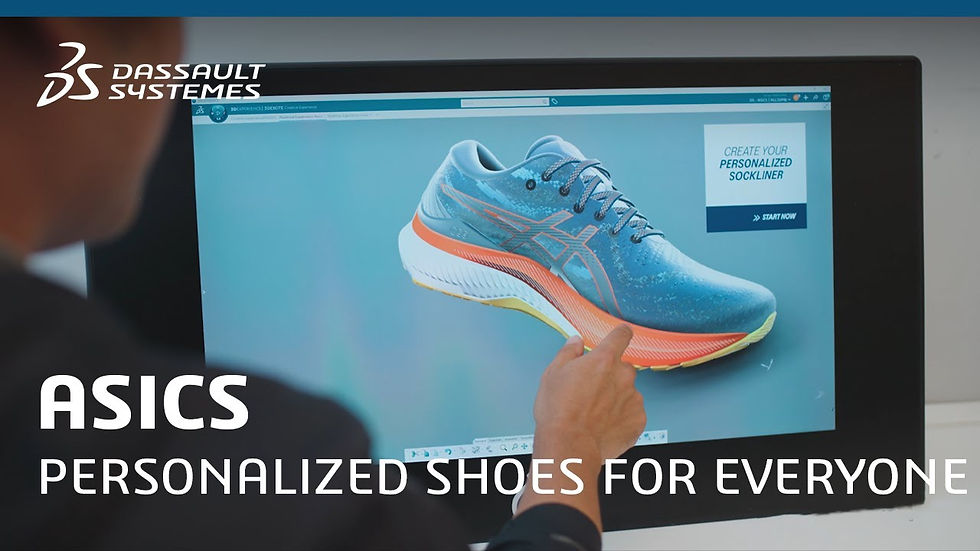Jeff Staple x Zellerfeld: A 3D-Printed Sneaker Quietly Reshaping the Industry
- Nader Alk
- Mar 24
- 3 min read
On March 20, 2025, a sneaker with no laces, no stitching, and no glue quietly launched on Zellerfeld’s official website. There were no flashy teasers or celebrity endorsements; instead, the release felt more like a quiet experiment. But for those who follow design, technology, and the future of footwear, the arrival of Sapienz marked a pivotal moment.
This sneaker wasn’t traditionally manufactured. It was created through 3D printing. Behind it lies a conversation between a streetwear designer and a tech company, representing the fashion industry’s reimagination of how things could be made in the future.

A Collaboration That Felt Inevitable
Jeff Staple is a defining figure in New York street culture, having built influence since the 1990s through visual storytelling and branding. His companies, Staple Design and Staple Pigeon, have long connected streetwear with the mainstream.
Zellerfeld, based in Germany, is an innovation-driven company with a bold idea: in the future, shoes might no longer require stitching, inventory, or even standardized sizing.
One is a designer who builds narratives; the other is a group of engineers rethinking production. Their collaboration wasn’t a surprise. It felt like a natural response to the direction the world is heading.
Laces Are Now Symbolic Rather Than Functional
Sapienz stands out for its bold design. The upper is built with bone-like structures that resemble laces, but they’re purely aesthetic. There’s no need to tie anything. The shoe is a unified whole. This sculptural minimalism raises an important question in design: do laces still serve a purpose?
To share this concept with the world, Jeff Staple created a short video series called Kung-Shu, inspired by the rhythm and drama of kung fu films. These clips bring the shoe to life through motion, emphasizing its presence in the real world. The message is clear: shoes aren’t just products. They can express movement, emotion, and cultural identity.
It’s the Method That Sets This Shoe Apart
Zellerfeld operates more like a footwear tech lab than a traditional shoe factory. Instead of relying on molds, stitching, and assembly, they use single-piece 3D printing to create shoes. Each pair is printed from a scan of the user’s foot, eliminating the need for mass inventory.
This shift transforms shoes from standardized industrial products into personalized, data-driven creations. There’s no need for conventional sizes or layered construction. Even the idea of a production cycle becomes obsolete. As long as your foot scan exists, Zellerfeld can print a shoe tailored for you.

Where Visual Design Meets Physical Experience
Sapienz goes beyond just looking futuristic. It also feels different. The first time you put it on, you’ll notice that the sensation is nothing like wearing a traditional sneaker. The sole is firm but doesn’t dig into your foot. It wraps around the foot snugly but without discomfort. This comfort comes not from foam or padding but from structural design.
Because of its unique build and material, the shoe offers a stable and clean walking experience. It’s not intended for high-impact sports, but it performs well in daily urban environments. Some people might need time to adjust to the feel. Others will appreciate its simplicity, free from unnecessary cushioning or tech layers.
This design philosophy captures the core idea behind Sapienz. It isn’t focused on being softer, thicker, or more responsive. Instead, it offers a lightweight and direct wearing experience built on a rethinking of what a shoe should be.
A Starting Point, Not a Final Answer
Sapienz isn’t aiming to replace mainstream sneakers like the Air Max or Boost. It doesn’t rely on traditional tech features or cater to performance running. Instead, it represents a form of experimentation, which is a challenge to how we currently produce and consume footwear.
As Jeff Staple put it, “This isn’t just another sneaker. It’s a rethinking of what a shoe can be.” The team at Zellerfeld shares this mindset. They’re focused on changing the system from the ground up, not just creating a single product.
Walking Into the Unknown, One Step at a Time
Sapienz offers more than just physical support. It opens a new kind of conversation between designers and wearers, as well as between creativity and technology. While the shoe may not be flawless, it’s honest, adaptable, and ready to evolve.
We often say a good pair of shoes will take you where you want to go.
Sapienz seems to ask a different question:
Are you willing to walk a path no one else has taken?
Photos courtesy of zellerfeld.com




Comments